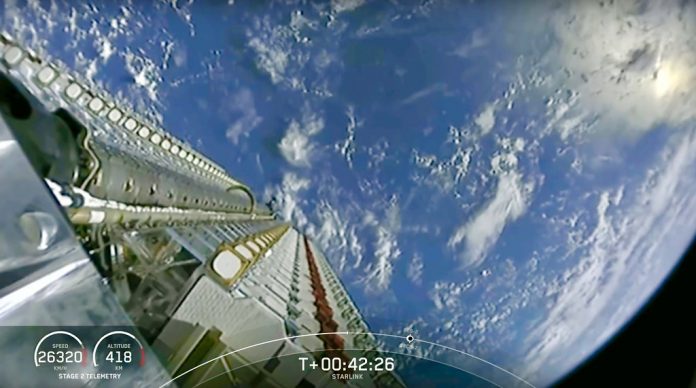Cost-effective rural Internet service delivered by private-sector providers without costly federal subsidies.
by Robert Poole
Broadband internet service is now seen as a 21st-century necessity, just as electricity and telephone service was viewed for much of the 20th century. But the usual means of providing this service—fiber optic cable—is cost-effective in urban areas, where houses and businesses are located quite densely. It’s another story in vast low-density rural areas, where fiber can be very expensive.
Congress loves to give things to voters, and so recent years have seen a growing array of federal rural internet subsidy programs, most of them aimed at bringing fiber lines to small towns, farms, Indian reservations, etc. A Government Accountability Office report in May 2022 identified $44 billion in federal rural broadband funding from 2015 through 2020.
A Sept. 6, 2023 Wall Street Journal article provided some data on how costly these efforts are. A bar chart showed the average cost per rural connection of four of the federal subsidy programs, as follows:
| Tribal Broadband Connectivity Program | $ 13,335 per rural connection |
| USDA ReConnect | $ 9,014 |
| Treasury Capital Projects Fund | $ 3,313 |
| FCC Rural Digital Opportunity Fund | $ 1,753 |
Those are the average cost per connection. But some cost far more than that. WSJ reporter Ryan Tracy noted that a planned project for the Winnebago Tribe in Nebraska will cost an estimated $53,000 per hookup.
Fierce Telecom’s Diana Goovaerts reported that a $33 million federal grant to the Alaska Telephone Company will run fiber to 211 homes and five businesses at a cost of nearly $204,000 per hookup.
There’s a better way to provide broadband to rural areas. Both SpaceX and OneWeb are building satellite networks that offer high-quality broadband service to rural areas worldwide at far lower average cost than the federal grant programs.
SpaceX won an $855 million contract from the Federal Communications Commission three years ago to provide Starlink broadband service to 640,000 rural homes and businesses in 35 states. That works out to $1,336 per connection, 25 percent less than the per-connection cost of the FCC’s fiber program.
Yet last month FCC terminated that contract because SpaceX wasn’t rolling out the service as fast as the agency wanted. Dissenting FCC commissioner Brendan Carr estimated that it would cost FCC $3 billion to provide the same amount of service as Starlink, nearly four times the cost.
SpaceX’s Starlink so far is the largest provider of space-based broadband, but Europe’s OneWeb is its first serious competitor, with 618 satellites in operation compared with 5,420 Starlink satellites as of December. Amazon has just begun launches for its 3,200-satellite Kuiper service.
As for reaching farmers, the world’s largest producer of farm machinery, Deere & Co., has just announced a deal with SpaceX under which it will install Starlink terminals on tractors, seed planters, crop sprayers, and other equipment. Deere estimates that about 30 percent of U.S. farm acreage lacks sufficient wi-fi service for the kinds of agricultural services it now provides. And the problem is far larger in less-advanced agricultural countries, such as Brazil, where Deere also plans to offer Starlink-equipped vehicles.
The problem of rural broadband is being solved—and at zero taxpayer cost—by space-based internet service providers.
Federal broadband programs are an attempt to replicate New Deal rural telephone and electricity programs, when the private sector is rapidly expanding to meet this market demand using newer technology. Spending billions of taxpayer dollars on very costly fiber-based rural broadband is an example of making our economy poorer.
Originally published by the Reason Foundation. Republished with permission.
For more Budget & Tax News.












Seems to me the squandering of American (taxpayer) dollars is the idea. The leftists/marxist in DC are doing their level best to destroy America. Bankruptcy will do that.
The question is, how long do we have?